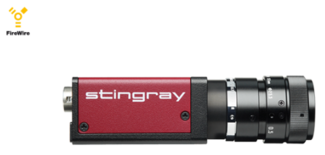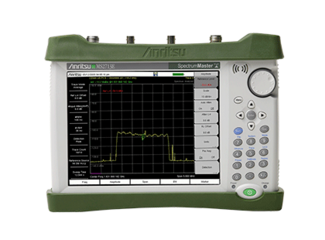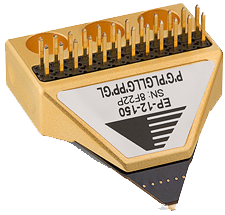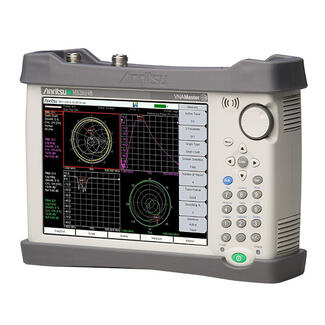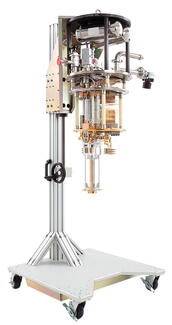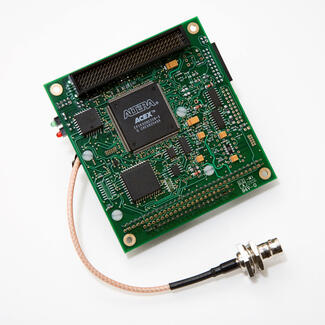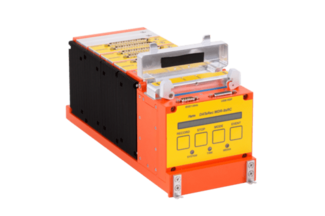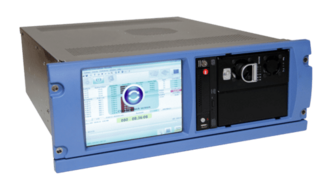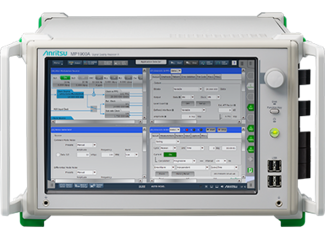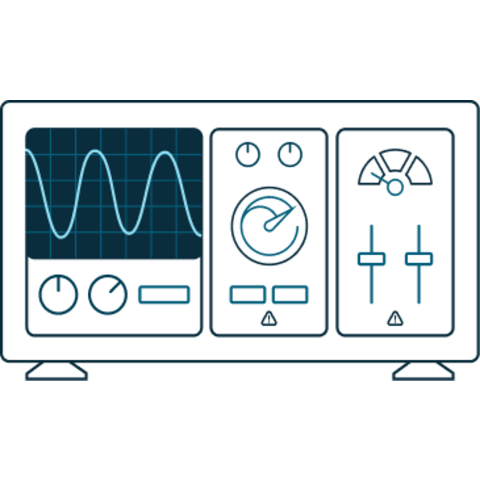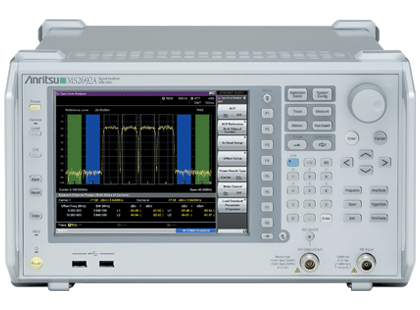Anritsu - MS2692A - Signal Analyzers
-
Frequency Range: 50 Hz to 26.5 GHz
-
Analysis Bandwidth
-
31.25 MHz (Standard)
-
62.5 MHz / 125 MHz (Option)
-
-
Supports 5G NR (sub-6 GHz) TDD/FDDNEW UPDATED
-
Wide measurement dynamic range EVM performance: <0.5%
-
One-button dynamic-range optimization at EVM measurement
-
Microwave Preselector Bypass (Option): 6 GHz to 26.5 GHz
-
One-Box Tester with the addition of the Signal Generator option
-
Batch Capture Measurements for the fastest analysis time
Signal Analysis will never be the same again
MS269xA Series Signal Analyzers are the latest high performance signal analyzers for next-generation communication applications. The MS269xA Series Signal Analyzer base units include swept spectrum analysis, FFT signal analysis, and a precision digitizer function. Add options to incorporate a Signal Generator, to turn the instrument into a hassle free, plug and play, one box solution.
The MS269xA Series Signal Analyzers support a standard analysis bandwidth of 31.25 MHz that can be extended to 62.5 MHz /125 MHz with optional hardware. Using a patented calibration process, the multipoint amplitude calibration and the phase calibration result in a level accuracy of ±0.5 dB across a 6 GHz span. No other analyzer on the market can meet that specification! These boxes are superlative in every way -- they measure the widest signals and using the latest technology, make measurements faster than ever before. The modular architecture ensures a box that grows as measurement requirements change.
A series of options enables standards-based modulation analysis, vector signal generation, and BER measurement. The end-user can configure a one-box solution that dramatically reduces cost, footprint, and Total Average Cycle Time (TACT) for device evaluation.
The MS269xA Series Signal Analyzers are accurate enough for the most demanding R&D environment, yet are fast enough for the factory floor! Currently supported applications include GSM, GPRS, EDGE, W-CDMA, and LTE.
The wideband FFT signal analyzer (analysis bandwidth of 31.25 MHz with option for 62.5 MHz /125 MHz) supports high-speed continuous measurements including CCDF, frequency vs. time, spectrum, and power vs. time analysis. The standard digitizing function can capture waveforms and immediately play them out using the optional Signal Generator. An extended digitizer option adds the ability to capture signals up to 20 MHz wide for up to 4 hours.
Applications
- BTS and UE transmitter testing
- Receiver testing with the Signal Generator option
- High-performance for R&D
- High-speed for manufacturing
- General Purpose analysis for modulation R&D
- 5G NR (sub-6 GHz) UPDATED
- 3GPP testing including LTE/LTE-Advanced (FDD/TDD), EDGE evolution, and HSPA+
- WLAN testing including IEEE802.11a/11b/11g/11j/11n/11p and 11ac
- Power amplifier testing
- Satellite Communications
- Physical layer Testing for all 3GPP technologies
Technologies
- Bluetooth
- WLAN
- LTE
- W-CDMA/HSPA/HSPA Evolution
- TD-SCDMA
- Base Station Testing
- Connecting the IoT World Testing with Anritsu
Options
| Communication system | Applicable software |
|---|---|
| Basic Digital Signal Analysis | Vector Modulation Analysis Software |
| 3GPP 2G and 3G Analysis |
GSM/EDGE Measurement Software EDGE Evolution Measurement Software W-CDMA/HSPA Downlink Measurement Software W-CDMA/HSPA Uplink Measurement Software TDMA IQproducer HSDPA/HSUPA IQproducer |
| W-CDMA BTS Testing | W-CDMA BS Measurement Software |
| LTE FDD Analysis |
LTE Downlink Measurement Software LTE-Advanced FDD Downlink Measurement Software LTE Uplink Measurement Software LTE IQproducer LTE-Advanced FDD Option |
| LTE TDD Analysis |
LTE TDD Downlink Measurement Software LTE-Advanced TDD Downlink Measurement Software LTE TDD Uplink Measurement Software LTE TDD IQproducer LTE-Advanced TDD Option |
| 5G NR (TDD) UPDATED |
5G NR TDD sub-6GHz Downlink Measurement Software 5G NR TDD sub-6GHz Uplink Measurement Software |
| 3GPP2 Analysis |
EV-DO Forward Link Measurement Software All Measure Function CDMA2000 Forward Link Measurement Software All Measure Function |
| ETC/DSRC Analysis | ETC/DSRC Measurement Software |
| TD-SCDMA Analysis | TD-SCDMA Measurement Software |
| Composite Waveforms for Signal Generator option | Multi-Carrier IQproducer |
| WLAN Analysis |
WLAN (802.11) Measurement Software 802.11ac (160 MHz) Measurement Software WLAN IQproducer 802.11ac (80 MHz) Option |
| Hardware Options | Remarks |
|---|---|
| Rubidium Reference Oscillator | Aging rate ±1 × 10-10/month |
| Wideband Analysis Hardware | Extends the Analysis Bandwidth to 125 MHz |
| Analysis Bandwidth Extension | Extends the Analysis Bandwidth to 62.5 MHz / 125 MHz |
| 6 GHz Preamplifier | 100 kHz to 6 GHz |
| Vector Signal Generator | 125 MHz to 6 GHz |
| Baseband Interface Unit | For testing DigRF 3G RFIC interfaces only |
| Extension of Preselector Lower Limit to 3 GHz | Extends lower limit of pre-selector to 3 GHz |
| Microwave Preselector Bypass | 6 GHz to 26.5 GHz |
| Noise Figure Measurement Function | Y-factor method using a Noise Source |
High-Speed-MSMT
Discover... Anritsu - Get the right tool for the job Ultra-High Speed ACLR Measurement |
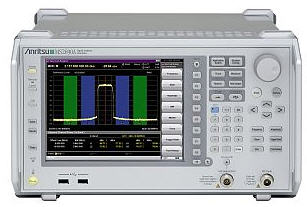 |
Capture Function Requires No Averaging!
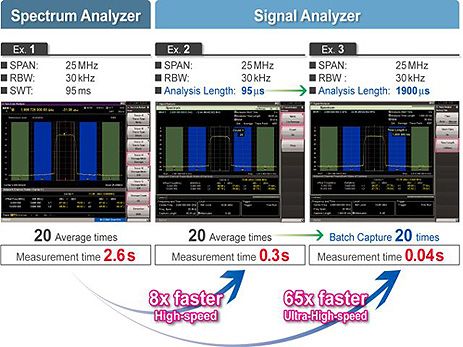
[Ex.1] - Measurement using conventional spectrum analyzer. The spectrum analyzer requires more time to measure because it must sweep for the number of averaging times.
[Ex.2] - Measurement using signal analyzer.
The signal analyzer performs high-speed measurement even at the same number of averaging times by capturing the entire in-band data at one time. (8x high speed).
[Ex.3] - Batch capture measurement using signal analyzer
The signal analyzer performs ultra-high-speed measurement by capturing data once for the measurement time equivalent to the averaging times, eliminating the need for averaging. (65x ultra-high-speed)
* The above measurement time is calculated from the time required for 100 measurements.
Measurement Image
The measurement principle is shown in the image below.
The signal analyzer function cuts the measurement time from 2.6s to 0.04s (65x faster) compared to using a conventional spectrum analyzer.
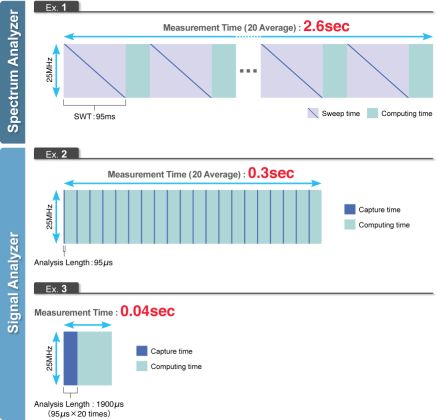
When the Spectrum Analyzer (Ex. 1) sweep time is 95 µs and number of display points is 1001, the time per display point is about 95 µs. To obtain about the same accuracy for one measurement with the Spectrum Analyzer at the Signal Analyzer (Ex. 2), set Analysis Length to 95 µs. Additionally, set Analysis Length to 1900 µs (95 µs x 20 times) to obtain the accuracy for 20 measurement using the Spectrum Analyzer as shown in Ex. 3.
Advantage of Ultra-High-Speed ACLR Measurement
Amplifier adjustment is laborious work (adjustment ‹ › confirmation) requiring confirmation of various performance items, such as the distortion compensation circuit, current adjustment, and frequency characteristics. As a result, careful ACLR adjustment requires a lot of time.
In particular, amplifiers for high-performance base stations require several performance adjustments. Using the MS269xA cuts the work time by a factor of 10.
|
Brochure
|
Release Date
|
|---|---|
| Measurement Software MX2690xxA / MX2830xxA / MX2840xxA / MX2850xxA series | 5/15/2020 |
| Signal Analyzer MS2690A/MS2691A/MS2692A | 4/13/2020 |
| MX269xxxA series Software - Waveform Pattern MX2690xxA / IQproducer MX2699xxA | 4/8/2020 |
| 5G Solutions Catalog 2019 Vol. 2 | 7/17/2019 |
|
White Paper
|
Release Date
|
|---|---|
| Anti-Virus Measures for Instruments with Windows Operating System | 12/26/2019 |
|
Selection Guide
|
Release Date
|
|---|---|
| Anritsu Signal Analyzers/Spectrum Analyzers | 6/28/2019 |
|
User Guide
|
Release Date
|
|---|---|
| Software Package Install Simple Operation Guide | 4/13/2020 |
| MS2690A/MS2691A/MS2692A Security Update against WannaCrypt Ransomware Installation Instructions | 6/9/2017 |
| RF Signal Capture & Playback Simple Operation Guide | 10/31/2016 |
